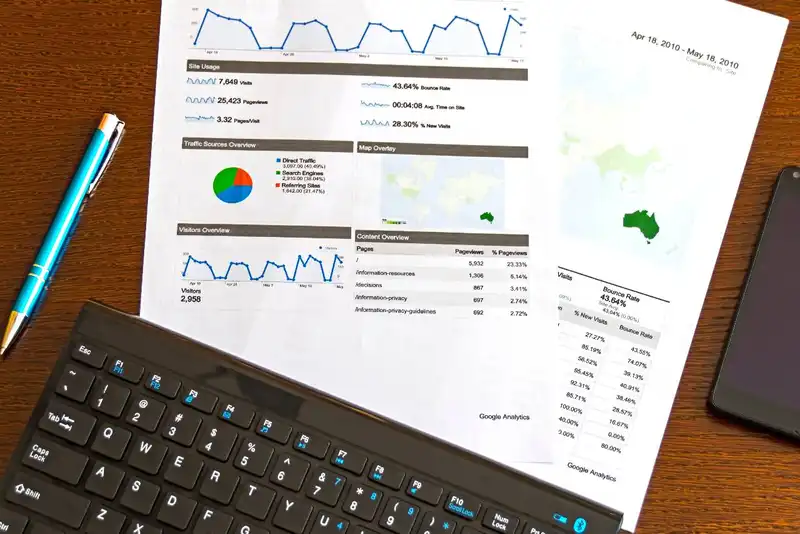What Is Data Transformation? Everything to Know
Introduction to Data Transformation
Organizations across all industries and sizes are producing raw data each day. In fact, statistics show that the average company manages 162.9TB of data. In order to analyze the incoming stream of information, business teams need to restructure these metrics and make them accessible.
Also known as data transformation, this process will help executives gain a better understanding of their data. To which they can then perform in-depth analytics and develop competitive business strategies.
What is Data Transformation?

Data transformation is the process of converting the data's format, value, or structure into another form. This entails adding, replicating, and deleting entries, as well as standardizing its aesthetics. It also involves identifying the information's current format and data mapping, as well as storing the metrics in a proper database. People commonly perform data transformations to translate raw data into clean and serviceable information.
According to a study from Forbes, 95% of businesses said that managing unstructured data is a problem for their operation. Therefore, companies are increasingly investing in methods and techniques to transform data sources. Doing so allows them to manage, integrate, and move data. This then enriches the information of raw metrics and highlights vital insights regarding internal and external functions.
Benefits and Challenges of Data Transformation
By transforming data from one format to another, businesses can reap many benefits, but they may also experience various challenges.
Benefits

The following are advantages that companies can enjoy with data transformations.
- Improved Organization - When data is clean and its structure is standardized, people and computer systems can locate it with ease and accessibility. Data can also be quickly organized based on its new format or type.
- Enhanced Data Quality - The process of transformation ensures that any null values, duplicated entries, flaws, and incorrect formats are rectified. Therefore, by properly formatting and validating data, its overall quality will improve.
- Guaranteed Compatibility - Data can be converted for multiple purposes in various ways. This means one data source can be compatible with different applications and business systems.
Challenges

The following are challenges that companies may experience when converting data.
- Costly Processes - Depending on the data's infrastructure, as well as software and application systems, the transformation process may be costly for businesses. Companies may also have to budget for licensing, IT and data specialists, and tools.
- Slow Down Operations - Data transformations require time and resources. For example, after converting a metric's format, staff will need to enter the data into business systems. This can slow down operations, as teams have to focus on updating their data.
- Labor Intensive - The time consuming process of converting data requires diligence and expertise. Any carelessness will result in inaccuracy and typos in the database. This then leads to misinformed business strategies and decision-making.
- Perform Multiple Transformations - Oftentimes companies will transform data, only to find later on that it is not compatible with their needs. Additionally, they may have multiple systems that require different formats of data. Therefore, teams will have to convert their metrics more than 1 time.
4 Steps of Data Transformation
The practice of translating data will vary based on a company's needs and systems. For example, a small food truck service will need a data transformation strategy that can manage information regarding food costs and inventory.
On the other hand, a high-end department store will want techniques for translating customer relationship data and buying behavior. However, the data transformation process has a core system that can be used for all businesses. The following are basic steps for creating or implementing a transformation system.
1. Interpret the Data
Before beginning the process, organization leaders need to understand what type of data they currently manage. It is also important to identify what format or structure the metrics need to be transformed into. By determining the specific goals for the data transformation from the start, business teams can work efficiently and productively. Additionally, it helps them plan the overall process, which will prevent delays and unnecessary steps.
One way organizations can streamline data interpretation is by utilizing dimensional modeling. This process categorizes two types of data transformation goals.
- Dimension Tables - These entries highlight the context of data regarding who, what, where, when, why, and how. Also referred to as the soul of the data warehouse, dimension tables include descriptive details and entry points.
- Fact Tables - These tables comprise measurements and facts about business processes. It answers the question of how many and holds metrics that teams will analyze. For example, entries in a fact table would have information about sales revenue for the week or products sold in a month.
2. Examine the Data Quality

After data formats and goals are determined, business teams can begin examining the quality of their data. This involves checking metrics to make sure they are accurate and not duplicated. Performing a quality assessment will also help teams pinpoint any corrupted values or missing datasets. This is a crucial step because faulty data can cause delays in later steps of the transformation process.
3. Transform the Data
Organizations can finally begin transforming their data at this stage. This step entails selecting a dataset and replacing it with a new metric that meets the standards of the target data format. For instance, a small business may transform its outdated JPEG file into JPEG2, a newer version of JPEG, by restructuring or replacing its tags.
4. Review the New Data's Quality

Once the data is translated, the business team must perform a second quality check. This is to ensure that the information and structure of the data remained the same throughout the transformation process. The team should try to identify any inconsistencies, errors, or missing metrics and audit these issues. If there are discrepancies in the output data, the team must correct the information and make changes to the process if necessary.
Types of Data Transformation
There are different types of data transformation that organizations can perform to better understand their operations. These methods help companies effectively leverage their diverse information and gain better visibility into their business functions. The following are the most common forms of data transformation.
Data Aggregation
This refers to searching, collecting, and presenting data in diverse reports. For instance, organizations will perform data aggregation when they want to research their male employees' salaries to compare to their female employees' salaries. To do so, they must aggregate the total number of male and female staff and then total the salaries for each group.
Data Cleansing

Also referred to as data scrubbing and data cleaning, data cleansing involves discarding outdated, null, duplicated, and incorrect information to enhance accuracy. It also calls for assessing data for syntax errors, fragments, and typos. Business teams will cleanse their data by conducting diligent analyses of their metrics and following strict protocols for data storage.
Data De-Duplication
Although similar to data cleansing, data de-duplication focuses on identifying and deleting multiple copies of the same information. This process is also known as single-instance storage, commonality factoring, and intelligent compression. To perform data de-duplication, teams must analyze metrics and compare them to existing information in the system. With the use of de-duplication algorithms, any copies will be deleted automatically.
Data Integration
Data integration is the act of compiling diverse data types and compiling them into one structure or location. For example, a retailer is conducting data integration when they merge datasets about sales with marketing performance. This process makes it easier for companies to analyze great volumes of data and helps highlight valuable insights about their overall operation.
Data Validation
This is the process of establishing automated standards and algorithms so business systems can act when there is a data problem. A company, for instance, can create a rule where the system flags or notifies the user when fields in a database are empty. This helps staff identify and rectify issues promptly. With data validation, businesses can guarantee their data's accuracy and quality after its transformation.
Format Revisions

Format revisions involve recognizing discrepancies in data types and fixing them accordingly. Some formatting issues may occur when the fields are numeric, but the entries are in text. Other inconsistencies may occur with dates, times, and measurements. Format revisions include implementing character limits, standardizing schemas, and creating columns for lists.
Data Splitting
Data splitting is when a single column in a database is divided into multiple columns. This helps with organizing data and simplifies the analysis process. Data splitting is also convenient for business owners who want to conduct experimental analysis and test their datasets. They can create a single column for their original, controlled data to ensure it is untouched during the analysis.
Data Filtering
These are established methods and techniques that companies use to refine their multiple data sets. By filtering diverse data sources, business teams can remove repeated information and irrelevant metrics in their system. A common procedure of data filtering is using specific fields, columns, and rows for analysis.
For example, if a manager wants to only examine their customers' buying behavior, they would select the column that shows historical transactions. This filters out unnecessary information, such as customers' addresses and credit card information.
Data Joining

Data joining is when the end-user connects two or more tables together. This is considered the most important feature of data transformation because it helps people see the relationship between multiple datasets. A company can merge metrics regarding their monthly sales to their social media audience engagement, for example. Doing so allows them to see if their online marketing is contributing to revenue.
Key Takeaways - Data Transformation
- Data transformation is the process of translating data's format, value, or structure into a new form. The practice generally involves adding, copying, and discarding entries, and standardizing structures.
- Organizations from all industries can leverage their raw data sources with data transformation. With this process, enterprises and small businesses can gain valuable insight into their internal and external operations. It also streamlines their data management process since all their datasets can be made compatible with diverse business systems.
- There are key benefits to data transformation tools. These include improving organization skills, enhancing data quality, and guaranteeing data compatibility with various platforms.
- There are also challenges when it comes to translating datasets. These involve increased expenses, slowed operations, more work, and multiple integration processes.
- Companies will have different data transformation strategies depending on their industry, operation, size, and goals. However, the 4 core steps that all businesses should apply to their data integration practices are data interpretation, quality examination, transformation, and review.
- There are various types of data integration systems, such as data aggregation, data filtering, and format revision.






